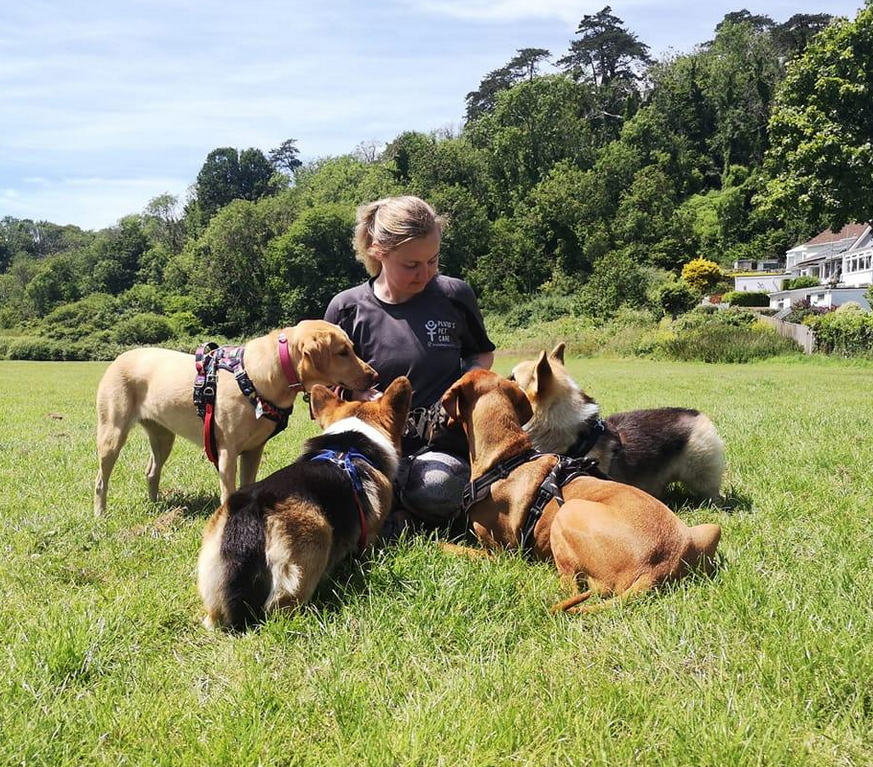🐕🦺Head Collars & Collars Alone vs Harnesses: What Science Says About the Best Dog Walking Equipment🪢
- Stevie

- Oct 13
- 4 min read
Basic physics tells you why harnesses are better than collars alone...
You find yourself on ice and suddenly hear the gut wrenching sound of cracking... you realise you're in the middle of a huge lake and the ice you thought was solid underfoot is failing. What do you do? Do you put all your weight onto one foot and hop along to the bank? Or do you drop, lie down and spread your body weight to spread the pressure? If you genuinely don't know the answer, you spread the weight distribution. This is what a dog harness does...

Walking with your dog should be one of the best parts of your day. But for many dog guardians, the reality is a bit different: aching shoulders, pulled arms, and the never-ending search for the “magic” bit of equipment that will finally stop pulling.
That’s why devices like head collars, figure-of-8 leads, and tightening harnesses are so popular. They promise instant control — but what do they actually do to your dog?
A 2025 review published in Animals (Basel) by researchers Camila Cavalli and Alexandra Protopopova looked at the science behind collars, harnesses, and head collars. Here’s what they found — and what it means for your walks.

🦴 1. No “One Size Fits All” – But Some Tools Are Better Than Others
The researchers reviewed 21 studies on different types of dog walking equipment. Their conclusion: there’s no single perfect tool for every dog. The right choice depends on your dog’s size, shape, behaviour, and your handling style.
But some options are clearly safer and more comfortable than others.
✅ 2. Best for Dogs Who Pull: Non-Tightening Front & Back Clip Harnesses
Front and back clip harnesses are designed to gently redirect pulling without putting pressure on your dog’s face or neck.
✔️ Use with a double-ended lead that is at least 2m (you can always shorten a long lead but can't lengthen a short one!)
✔️ They distribute pressure evenly across the chest and shoulders.
✔️ They allow free, natural movement.
✔️ They support training, not just control.
📝 Top tip: Choose a non-tightening, Y-shaped front-clip harness for maximum comfort and effectiveness.


🐶 3. Good for Calm Walkers: Flat Collars & Back-Clip Harnesses
If your dog already walks nicely on a loose lead, and has mobility issues or are touch sensitive, a flat collar can be perfectly suitable.
However, for dogs with short noses or breathing issues, a back-clip harness is the safer choice.
🐾 Minimal restriction
🐾 Comfortable for everyday use
🐾 Ideal for low-pulling dogs
📝 Check fit: you should be able to fit two fingers between the collar and your dog’s neck.

⚠️ 4. Head Collars & Tightening Devices Cause Discomfort and Stress
Tools like Halti Headcollar and Gentle Leader Headcollar are marketed as “gentle” — but research shows they increase pressure on sensitive areas like the nose, muzzle, and neck.
This leads to:
🚩 Signs of stress (pawing, shaking, trying to remove the device)
🚩 Pressure injuries or discomfort
🚩 Increased risk of injury if your dog lunges
And importantly: these devices don’t teach your dog how to walk nicely. They simply suppress the pulling behaviour in the moment.
📝 A fully qualified trainer or behaviourist will never suggest the use of any head collars or tightening devices. If they do, their knowledge is hugely out of date. We advise you seek a more up-to-date professional. Pluto's has a page here of dog trainers and behaviourists in Torbay and guides you on what to look for.
💬 5. Comfort and Training Beat “Quick Fixes”
Dogs walk best when they feel safe, comfortable, and free to move naturally. Quick fixes never fix anything, and whilst restrictive gear might give you control, at best, you have temporarily suppressed the undesired behaviour, but at the cost of your dogs physical and mental health.
Loose lead walking isn’t about forcing a dog to comply — it’s about clear communication, reward-based training, and the right equipment to support it.
✨ Need Help Teaching Loose Lead Walking?
At Pluto’s Pet Care + Training Support, we specialise in positive, science-based training that gets real results — without pain, fear, shock and aversive equipment, or quick fixes.
Whether your dog is a strong puller or just needs a little help, we can create a training plan tailored to you.
📅 Book a session today and let’s make walks fun again.









Comments